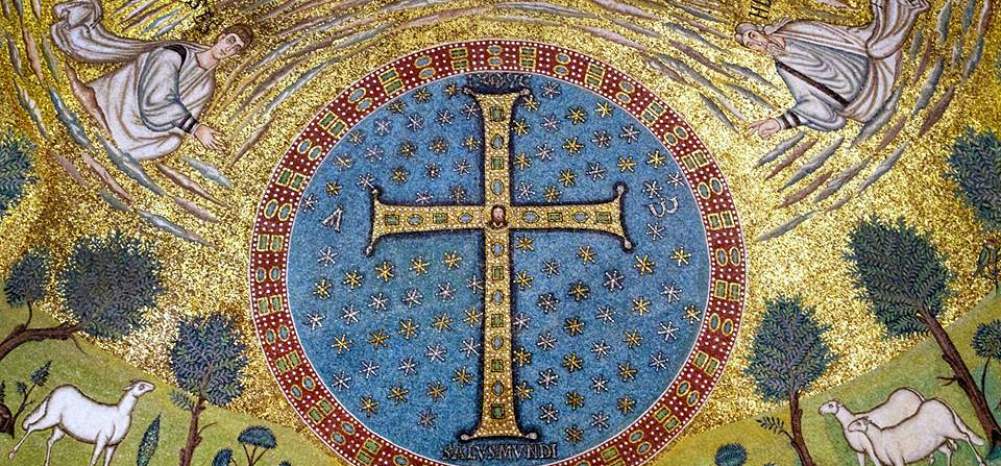
The cross and the divine light- our history…
The Cross and Holy Light in the Transfiguration
Our History Bears Witness
In the apse of the Saint Apollinaire (1) Cathedral in Ravenna is depicted a huge cross that dates from the 6th century (549 CE).
This cross bears witness to the faith awareness concerning the Theology of the cross and its relation to divine light. It figures the transfiguration, where the Lord Jesus has revealed his divinity and shone with uncreated light.
![]()
The icon of the Lord Jesus is depicted in the middle of the cross with Prophet Moses to the right and Prophet Elias to the left.
The three disciples of the Lord Peter, James, and John, are represented here with three sheep.
It should be reminded that the Church starts chanting the Katavasias of the Cross at the Transfiguration, until the feast of the Elevation of the Cross, 40 days later.
Indeed, the Cross holds a central place in the Christian faith since the establishment of Christianity. When the Lord was crucified on it, it was changed from an instrument of death to an exterminator of death. Thus, the cross became a bridge that transports us to eternal life, provided that we crucify our sins and eradicate them to be born with the Lord Jesus Christ, as a new creation in the divine unsetting light.
No matter how great the darkness of this age around us or the trials abound, we must not forget that the Lord Jesus Christ conquered death and told us with the letter: “In the world you will have tribulation, but be of good cheer, I have conquered the world” (John 16:33)
Each cross is a passage to eternal resurrection, however large or heavy we see it. It is our path to purification if we hold it steadfastly and patiently.
Saint Apollinarius was originally from Antioch, Syria.
He followed Saint Peter to Rome. Sent to Ravenna to preach the word of God.
He succeeded in his predication. The pagans persecu
ted him and drove him out of the city. He sailed to Corinth, preached in Mysia and Thrace. He returned to Ravenna, overturning an idol of Apollon.
He was arrested but he managed to escape. The pagans captured him again and tortured him until he died in a village for the lepers.
He had enormous pastoral feats and therefore he was considered a martyr.

2025-12-25
2025-12-24
2025-12-23
Patriarch John X Receives the…
2025-12-22
Inspection Visit to the…
2025-12-21







